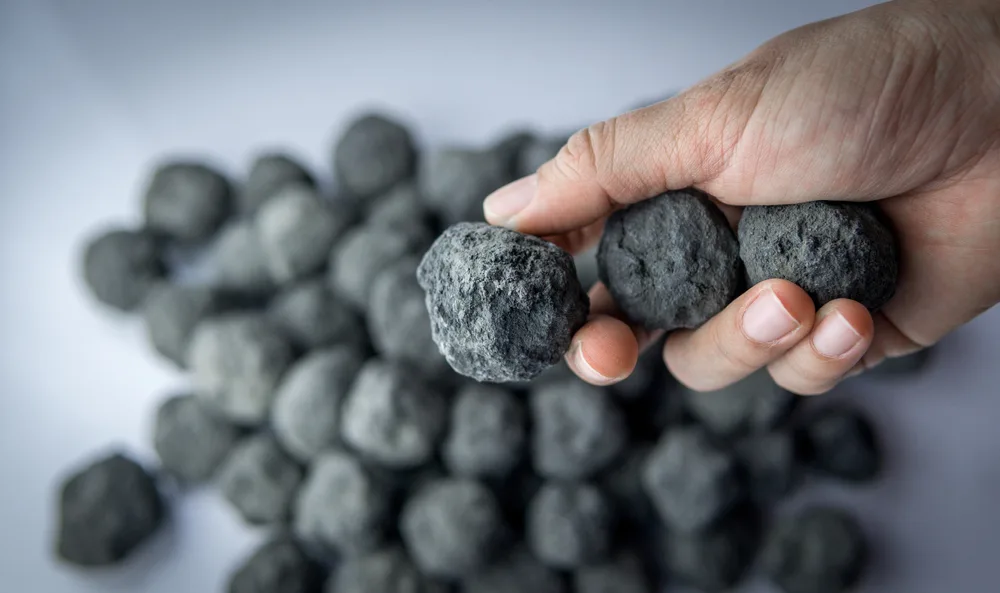"If the cement industry were a country, it would be the third largest emitter of carbon dioxide in the world, with about 2.8 billion tonnes, second only to China and the United States". This statement draws attention to the report by Lucy Rodgers for the BBC on the ecological footprint of concrete. With more than 4 billion tonnes produced each year, cement accounts for about 8% of global CO2 emissions. and is a key element in the production of concrete, the most manufactured product in the world. To get an idea, is produced approximately half a tonne of cement per person in the world each year, enough to construct 11,000 buildings similar to the Empire State. With these staggering figures, is there any way to reduce this impact?
To make cement, limestone, clay and sand are heated in very hot kilns, which reach up to 1450°C. This forms the clinkerwhich is then mixed with gypsum and other additives such as pozzolana. Cement accounts for approximately 10% of the concrete mix. The other basic components are sand, gravel (coarse and fine aggregate) and water. In the production of cement there are two main aspects that result in carbon dioxide emissions. According to the article by Robbie M. AndrewThe first is the chemical reaction involved in the production of the main component of cement, clinker, as carbonates (mainly CaCO3, found in limestone) are broken down into oxides (mainly lime, CaO) and CO2 by the addition of heat. The second source of emissions is the use of fossil fuels to generate the energy necessary to heat the raw materials to over 1000°C. In other words, during cement production, large amounts of fuel are consumed (usually from non-renewable sources such as coal, oil and gas). petroleum cokeThe emissions of different pollutant gases, including carbon monoxide and carbon dioxide, are emitted. According to this studyThe chemical reaction of calcination is responsible for approximately 52% of the CO2 emissions in the clinker manufacturing process, while energy consumption accounts for the rest (...) Considering energy consumption, for every 1,000 kg of clinker produced, an average of approximately 815 kg of CO2 is generated".

It is possible to reduce some of this impact. If clinker production is where most of the emissions occur, replacing it with other materials can make a big difference. So-called supplementary cementing materials (SCMs) are generally by-products from other industries, such as slag from steel and copper production, foundry sands from metal smelting operations, and fly ash, bottom ash and synthetic gypsum from electrical utilities. By replacing part of the clinker with these materials, concrete acquires new characteristics, which may be desirable in some cases, but mainly show a remarkable ability to reduce CO2 emissions. Another possibility is the volcanic ashan alternative to cement that has been used for thousands of years, enabling the Greeks and Romans to erect buildings so strong that they have remained standing ever since. By heating lime and volcanic ash to approximately 900°C and then mixing them with seawater, an extremely strong and stable material is achieved.
However, innovations can go further. CarbonCurefor example, seeks to reduce carbon dioxide emissions in a very different way. The Canadian startup has developed a process called CO2 Mineralisation, which involves injecting carbon dioxide into the concrete mix, causing it to react with calcium ions in the cement to form a nano-sized mineral, Calcium Carbonate, which becomes embedded in the concrete, increasing its strength.

Solidia Tech has been experimenting with a new recipe for cement that replaces limestone with the mineral wollastonitewhich does not remove carbon dioxide as it does not require heating. In addition, this component would retain carbon dioxide in the air during curing, creating a product with negative emissions. As pointed out by this articleIn addition, Solidia's cement blocks capture around 240 kg of carbon dioxide for every 1000 kg of cement used in the mix. This is in addition to the lower emissions produced during cement manufacture.
BioMasonis a North Carolina startup with a different approach, producing concrete without Portland cement or carbon dioxide emissions. Instead of Portland cement, biocement is used to bind the sand and gravel together. By incorporating recycled aggregates with live bacillus microbes, this triggers the combination of carbon and calcium to create limestone crystals, without the need for heating. While traditional concrete can take up to 28 days, Biomason biocement® reaches its final strength in less than 72 hours of growth. The final material consists of approximately 85% of granite from recycled sources and 15% of biologically grown limestone.
Engineers at Lancaster University in the UK have worked in collaboration with Cellucomp Ltd UK to study the effects of adding "nanoplatelets" extracted from plant root fibres to improve the performance of concrete mixes. Research has shown that plant-based composite concretes, made from vegetables such as beets or carrots, have structurally and environmentally superior performance to all commercially available cement admixtures, such as graphene and carbon nanotubes, at a much lower cost. The potential of plant-based composite concretes lies in the ability of nanoplatelets to increase the amount of hydrated calcium silicate in concrete mixes, the main substance that controls their structural performance. The indirect effect is that smaller quantities of concrete would be needed for construction. Nanoplates can improve product quality by reducing the amount of cracks that appear in concrete, which helps prevent corrosion and prolongs the life of the material. There are many other examples of companies looking for solutions to reduce emissions in cement and concrete production, and this article by Akshat Rathi covers most of them, providing valuable information on the subject.
The climate crisis has called for urgent solutions and, little by little, the construction industry is beginning to accept more alternative materials that can contribute to this change. However, the article shows that making concrete a cleaner material is a very complex task, involving a lot of resources and research time. It is important to ask whether, in the future, concrete should remain the main material for the construction industry, or whether it is possible to think about replacing it or mixing it with other materials that are inherently less polluting.